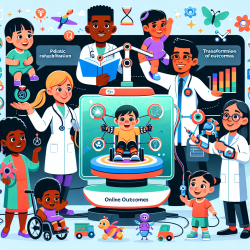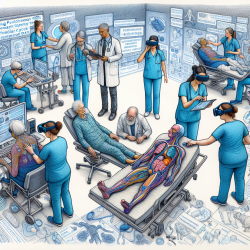Introduction
As speech-language pathologists, our mission is to continually improve our practice to create optimal outcomes for children and individuals with communication disorders. A foundational understanding of aphasia, a condition that affects language comprehension and production, is crucial. By examining historical research, such as Byrom Bramwell's "Lectures on Aphasia," we can gain valuable insights that are still relevant today.
Key Insights from Bramwell's Lectures
Published in the Edinburgh Medical Journal in 1897, Bramwell's lectures provide a comprehensive examination of aphasia. His work emphasizes the importance of understanding the neurological underpinnings of language disorders, which remains a cornerstone of modern speech-language pathology.
- Localization of Brain Function: Bramwell's lectures highlight the significance of brain localization in understanding aphasia. He discusses how specific brain regions are associated with language functions, a concept that has been further validated by contemporary neuroimaging techniques.
- Clinical Observations: Bramwell meticulously documented clinical observations, which serve as early case studies. These observations underscore the variability of aphasia presentations, emphasizing the need for personalized therapeutic approaches.
- Interdisciplinary Approach: The lectures advocate for an interdisciplinary approach, integrating insights from neurology, psychology, and linguistics. This holistic view is essential for developing comprehensive treatment plans.
Implementing Historical Insights in Modern Practice
Integrating historical insights into current practices can enhance therapeutic outcomes. Here are some strategies:
- Embrace Neuroplasticity: Modern research supports the concept of neuroplasticity, the brain's ability to reorganize itself. Incorporate activities that stimulate neuroplastic changes, such as intensive language exercises and technology-assisted therapy.
- Utilize Data-Driven Approaches: Leverage data from assessments and progress tracking to tailor interventions. This aligns with Bramwell's emphasis on detailed clinical observations.
- Foster Interdisciplinary Collaboration: Collaborate with neurologists, psychologists, and educators to create a supportive network for the child. This mirrors the interdisciplinary approach advocated by Bramwell.
Encouraging Further Research
While historical research provides a foundation, ongoing research is vital for advancing our understanding of aphasia. Practitioners are encouraged to engage in continuous learning and contribute to research efforts. Consider the following:
- Participate in Professional Development: Attend workshops, conferences, and webinars focused on the latest aphasia research and treatment methodologies.
- Contribute to Research: Engage in clinical research projects or collaborate with academic institutions to explore new therapeutic techniques.
- Stay Informed: Regularly review scholarly journals and publications to stay abreast of emerging trends and findings in the field.
Conclusion
By revisiting historical research like Bramwell's "Lectures on Aphasia," we can enrich our understanding and practice of speech-language pathology. These insights not only enhance our clinical skills but also inspire us to pursue further research and innovation in the field. To read the original research paper, please follow this link: Lectures on Aphasia.










